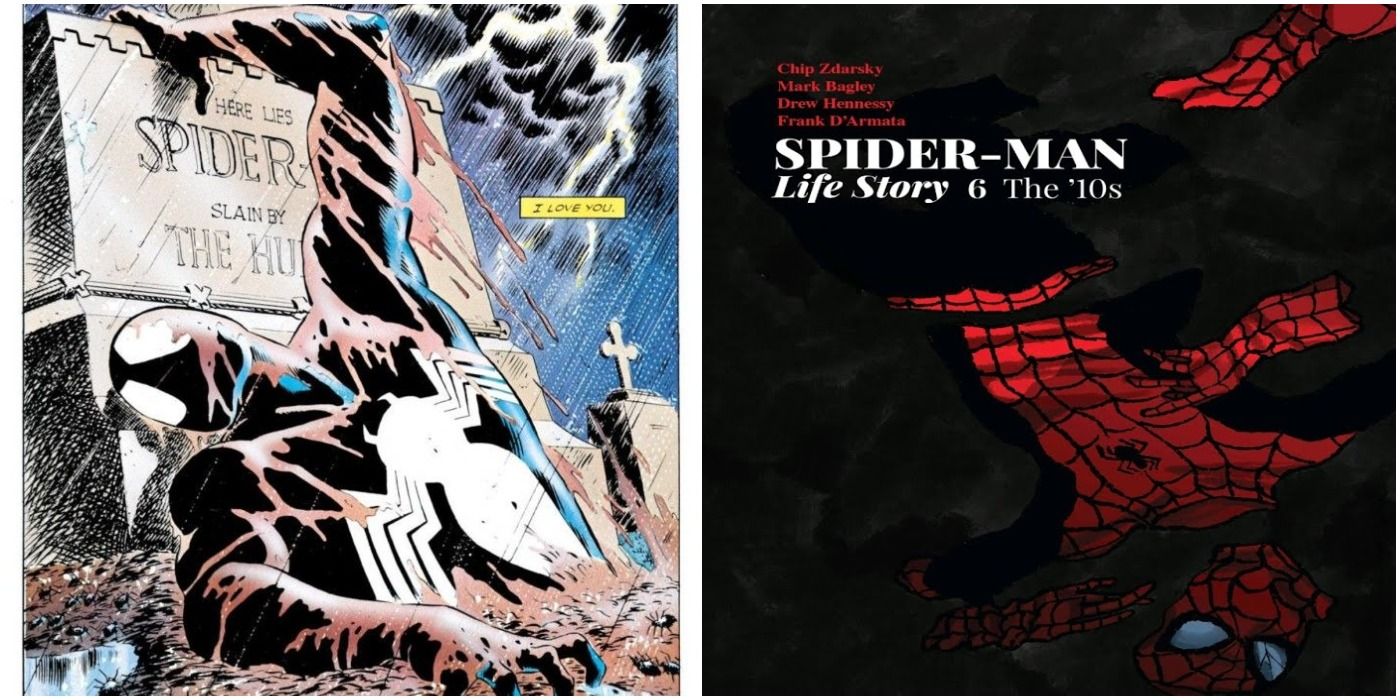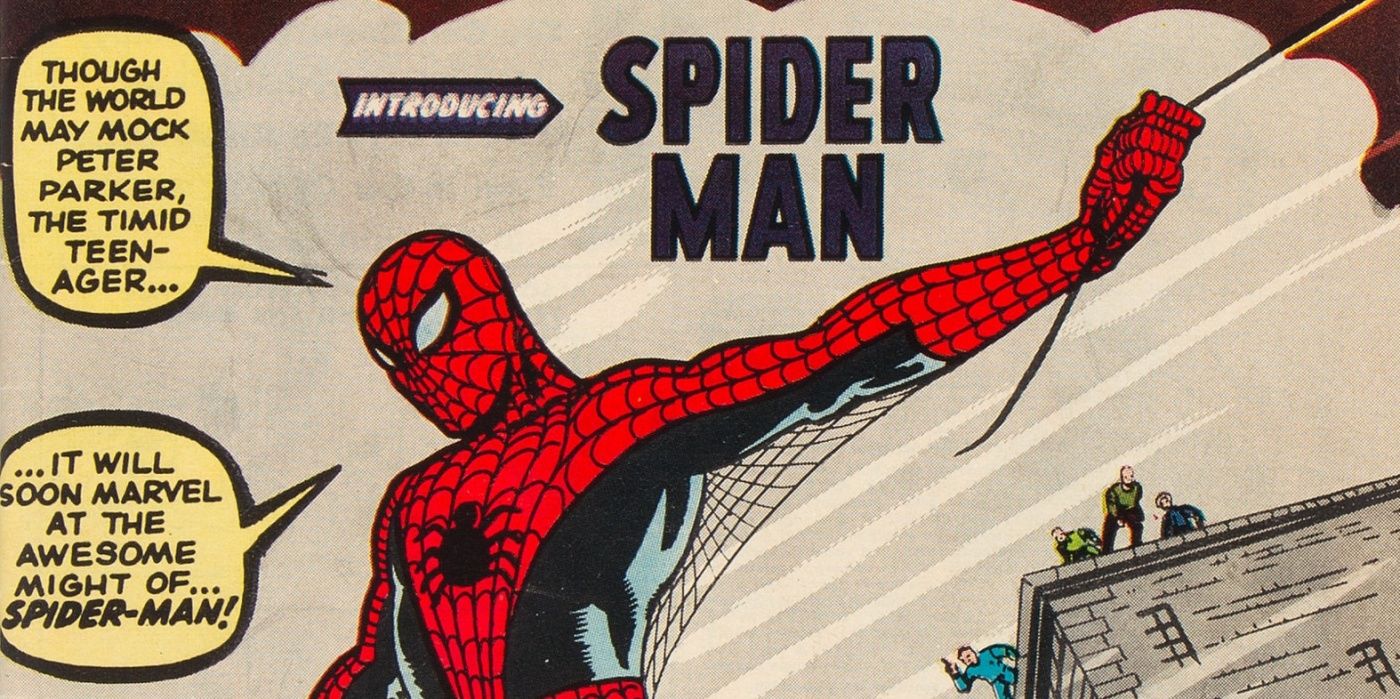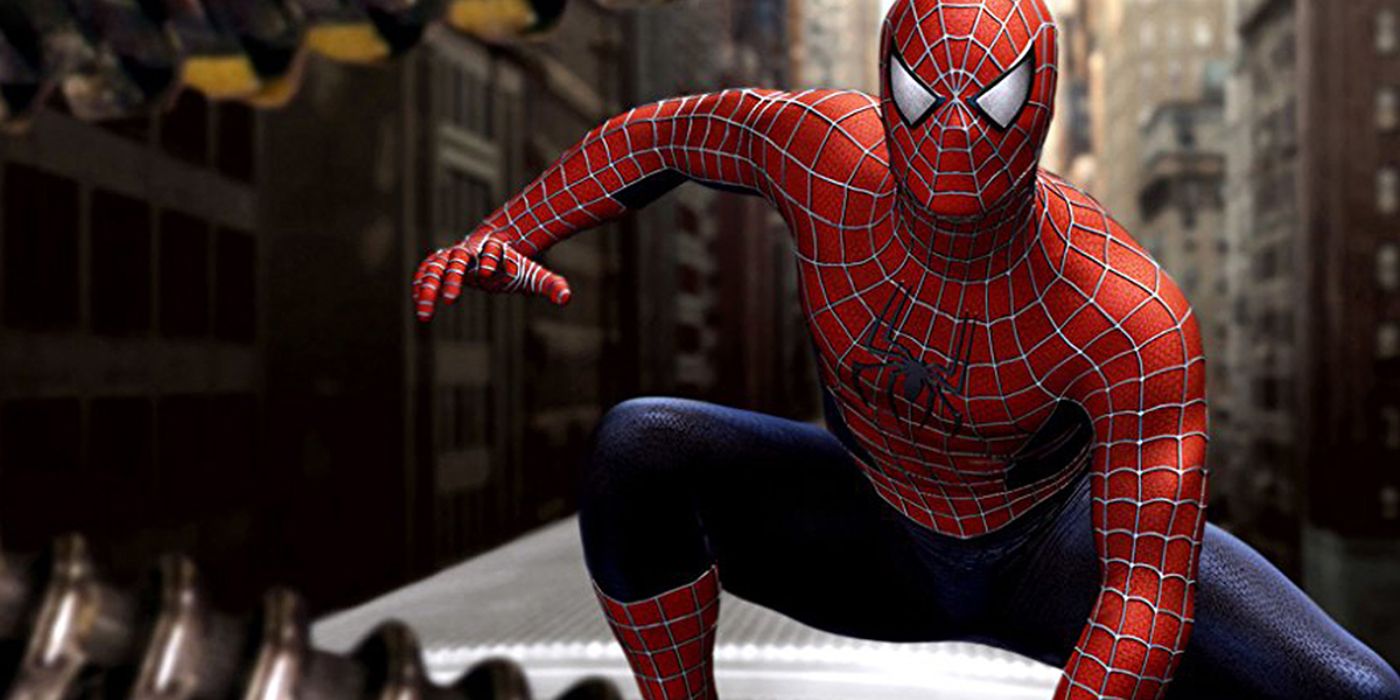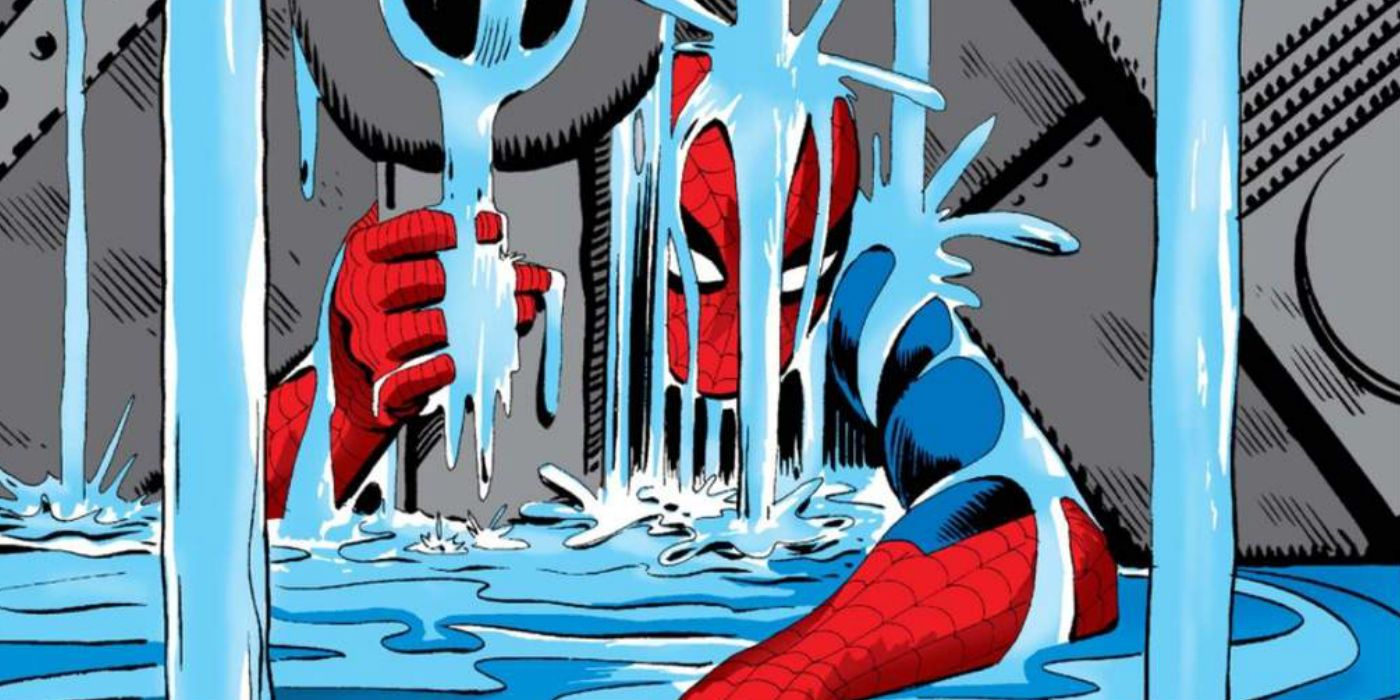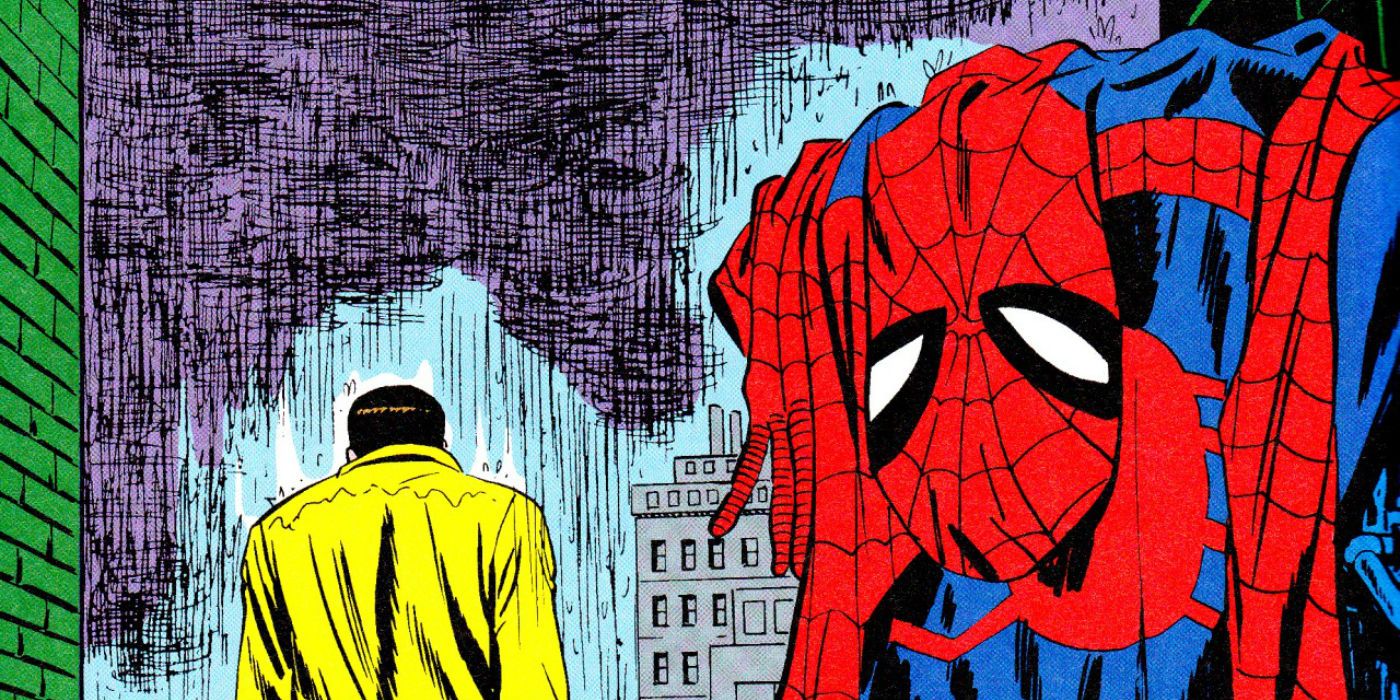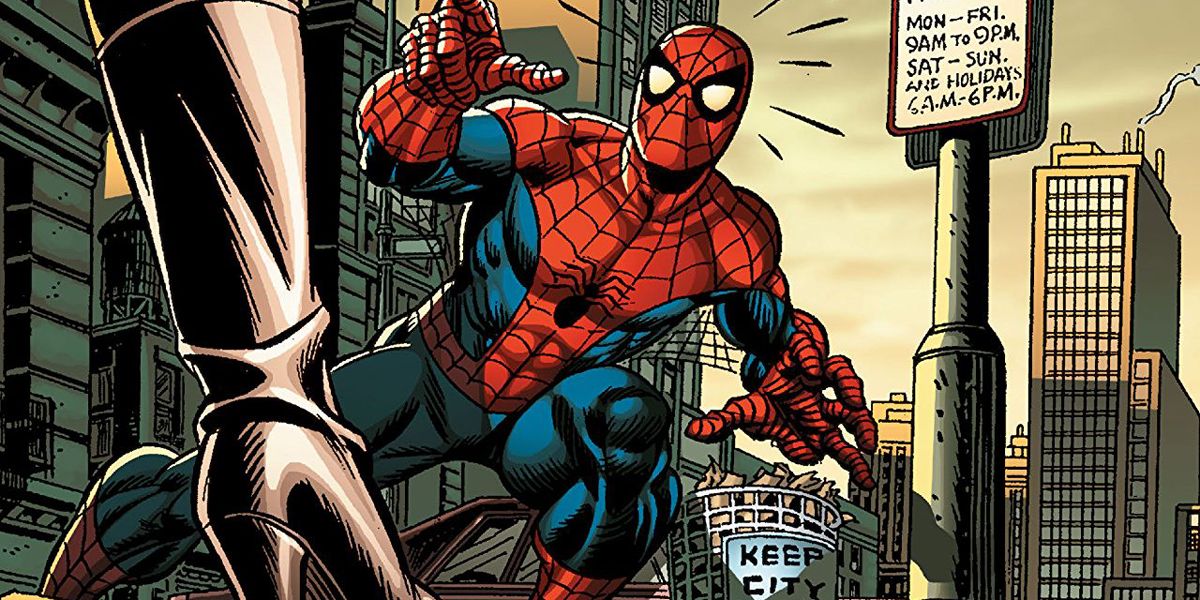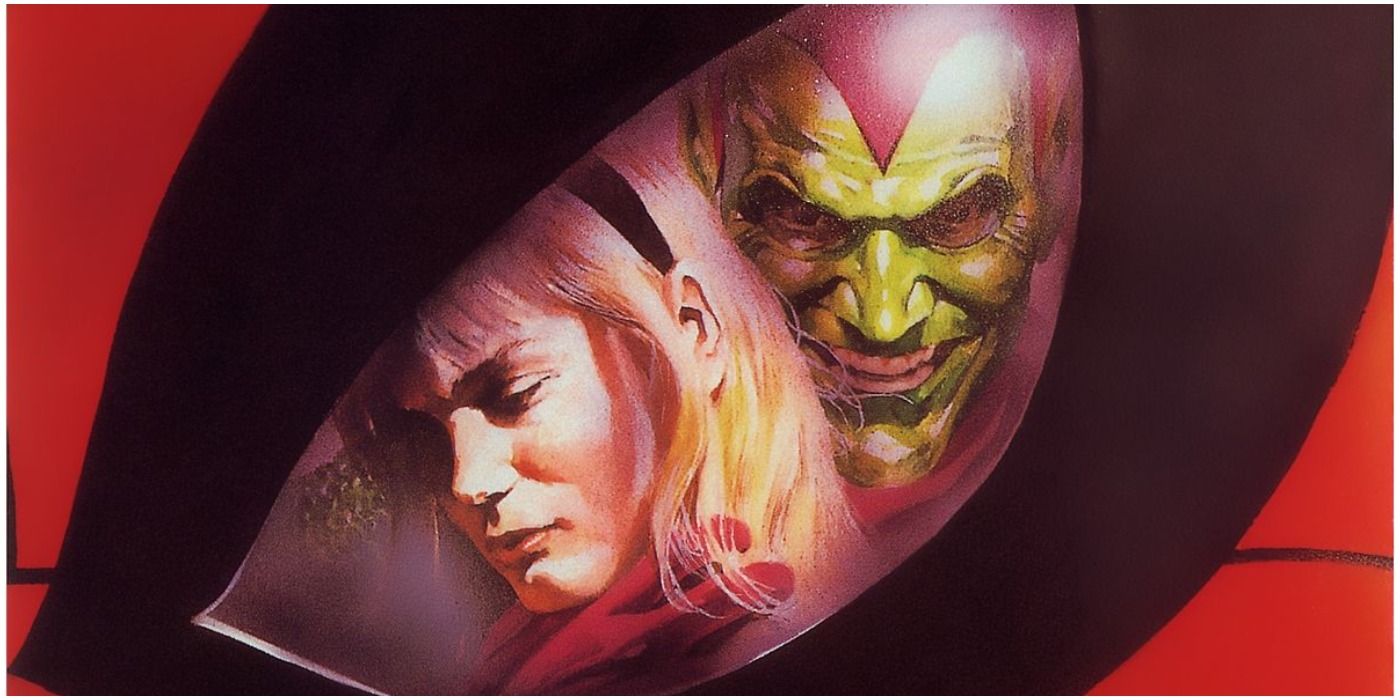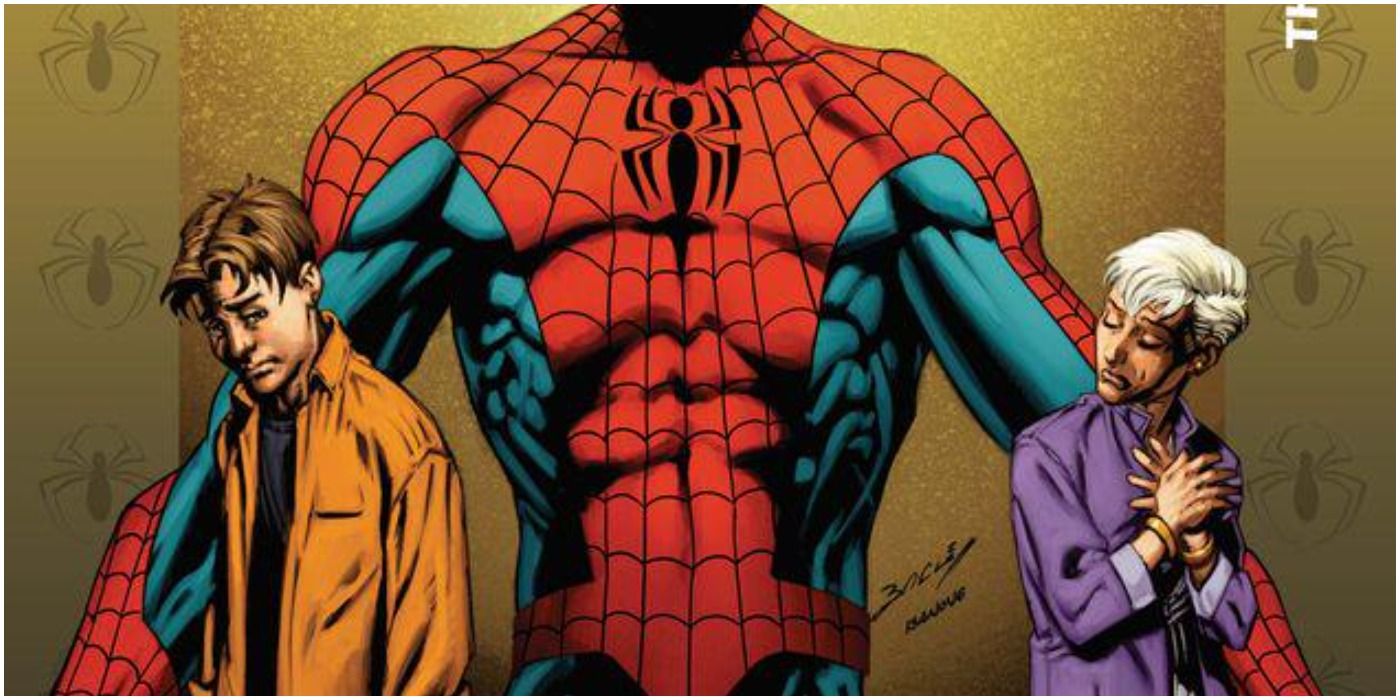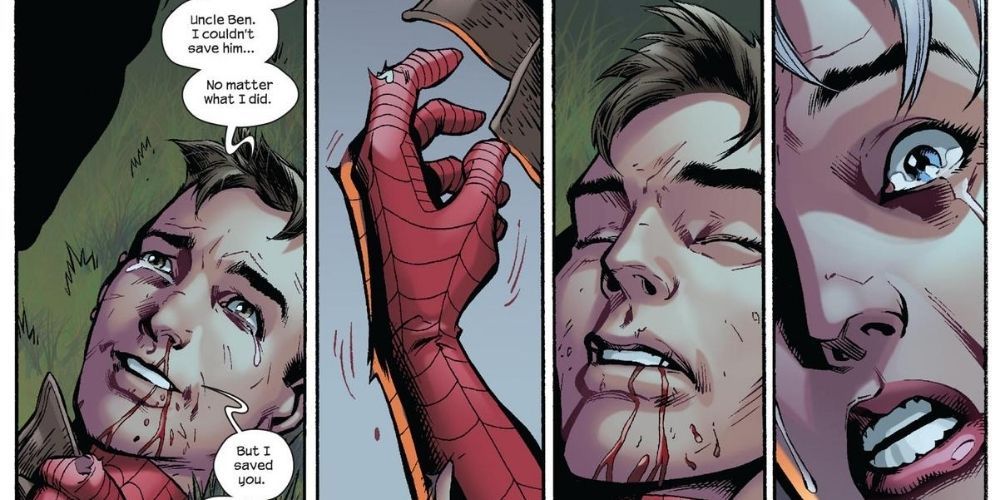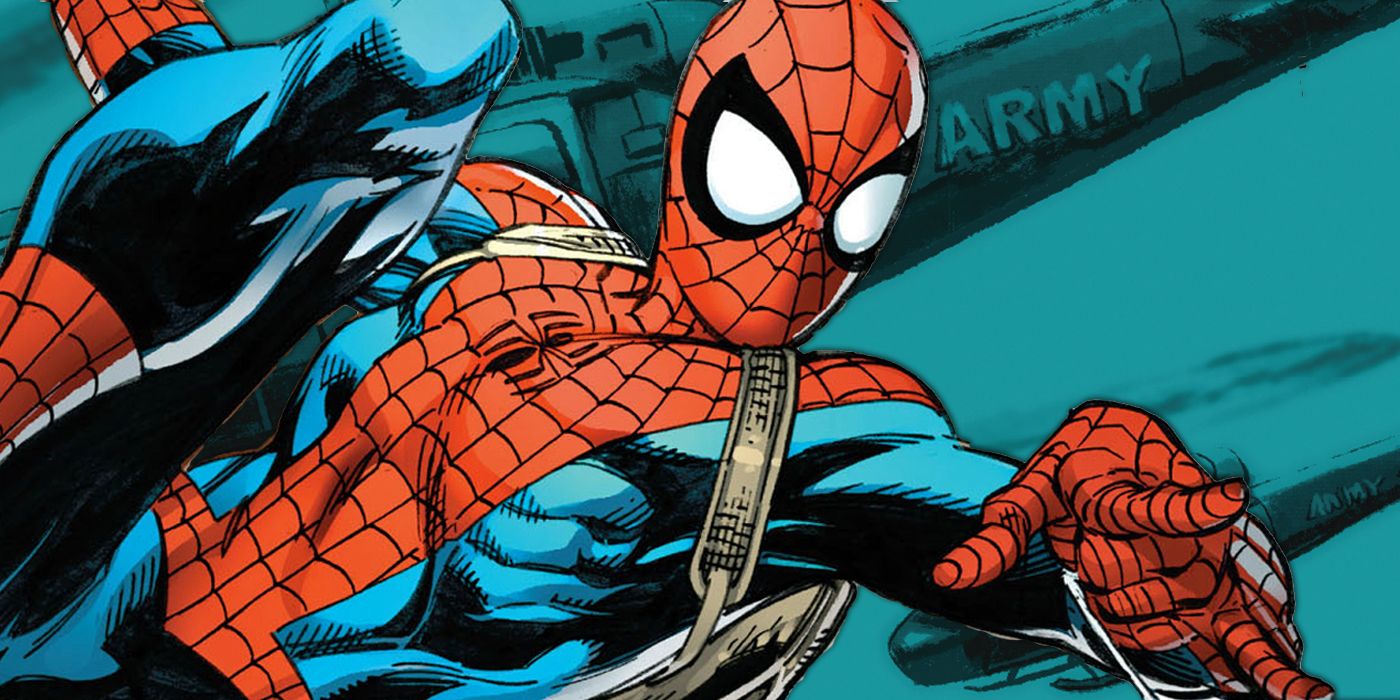Since the character first entered publication, the problems of agelessness and a sliding time-scale have hampered Spider-Man even more so than any of his comic brethren. The Web-Slinger has remained locked in a perpetually juvenile state, any and all attempts at maturation undone by writers seeking a reversion to the norm.
However, there has been the occasional Spider-Man story that could've served as an out—a culmination to Peter Parker's journey. Very few heroes ever get to retire but these select few stories might have allowed Peter Parker to hang up his suit one way or the other.
10 Amazing Fantasy #15
Yes, Spider-Man's story could've ended where it began. While obviously Amazing Fantasy #15 has spun off countless subsequent stories, it stands apart from most superhero debuts in that it's totally self-contained; the story can be read as a one-off and still hold power and finality. Peter goes through a full character arc in the issue—ostracized and bitter to powerful and arrogant to mournful and guilt-ridden. If Lee & Ditko had been so inclined, the closing narration," and a lean, silent figure slowly fades into the gathering darkness, aware at last that in this world, with great power there must also come – great responsibility!" could've simply been a capstone to a tragedy rather than the ethos of a myth.
9 Spider-Man 2 (2004)
Sometimes, you should quit when you're ahead. No other Spider-Man film, potentially no other live-action Marvel film, has been able to surpass Sam Raimi's Spider-Man 2. Spider-Man 2 is the type of superhero film rarely seen nowadays—it has a genuine artistic vision behind the camera and genuine humanity to its characters. Excise the sequel-bait of Harry Osborn discovering his father's Goblin lair, and the film feels like the definitive thesis for Spider-Man, delivered on film.
8 "If This Be My Destiny" (The Amazing Spider-Man #31–33)
The Amazing Spider-Man #33 promised it would be "The Final Chapter," and in a way, it was—this issue was the finale of co-creator Steve Ditko's run as the title's artist. This issue, and its 2 preceding ones, comprise a story of Spider-Man fighting "The Master Planner" (in truth Doc Ock) while his Aunt May slowly succumbs to radiation-poisoning. Issue #33 opens with one of the most iconic images of Spider-Man, him pinned under machinery with the isotope that can save his Aunt just out of reach.
Needless to say, he perseveres through and frees himself, saving his Aunt where he couldn't save his Uncle, bringing the guilt that motivated Peter since Amazing Fantasy #15 full-circle.
7 "Spider-Man No More!" (The Amazing Spider-Man #50)
In this famous one-off story, Peter, sick of both Jameson's libelous coverage of Spider-Man and how his night-life impedes his daily one, from neglecting Aunt May to ignoring his friends to his declining grades, quits being Spider-Man. Peter has always agonized over struggling to balance his superhero and social responsibilities, but this was the first time he'd outright quit being Spider-Man.
Once a crime wave hits the Spider-Man-less New York and Peter remembers why he became a hero in the first place, he reverses his retirement. Ironic that "Spider-Man No More" shows why Peter can never quit being Spider-Man; indeed, that dichotomy is why it could've worked as an open-ended conclusion.
6 "The Original Clone Saga" (The Amazing Spider-Man #144-149)
The first person to write The Amazing Spider-Man regularly after Stan Lee, Gerry Conway ended his run with the six-part "Clone Saga"—retroactively known as "The Original Clone Saga" to differentiate it from its longer 1990s sequel. Conway's most lasting contributions to Spider-Man were the death of Gwen Stacy and turning Mary Jane Watson into Peter's main love interest. In this storyline, Gwen seemingly returns from the dead, but in truth is a clone, created by her and Peter's old professor Miles Warren/The Jackal.
Warren, infatuated with Gwen, created the clone to replace her and a clone of Spider-Man to kill the real one, who he blamed for Gwen's death. After Peter faces his clone and the Jackal seemingly perishes, the clone of Gwen leaves NYC, deciding she needs to forge her own path. With that, Peter finally, sadly puts his lingering feelings for his lost love behind him and commits to a relationship with Mary Jane.
5 "Marvels"
This 4-issue mini-series, written by Kurt Busiek and beautifully drawn by Alex Ross, follows the history of the Marvel universe from 1939-1974, all from the perspective of Daily Bugle photographer Phil Sheldon. In the series' final issue, Phil befriends Gwen Stacy, only to witness Spider-Man fail to save her from the Green Goblin.
The event causes Sheldon to disassociate from the "Marvels" and the message of the story is clear; Gwen's death opened the Pandora's Box of adulthood into Spider-Man's world and the Marvel Universe as a whole. Once she died, so did the innocence of the early Spider-Man stories.
4 "The Talk" (Ultimate Spider-Man #111)
All good things must come to an end; writer Brian Michael Bendis & artist Mark Bagley revamped Spider-Man for the 21st century with Ultimate Spider-Man. After collaborating on 111-issues together, Bagley departed - his final story was "The Talk," where Peter finally admits to Aunt May that he's Spider-Man.
Bendis stayed writing until the series' end, but the later issues never quite feel the same with Bagley gone. Perhaps it would've been best to wrap-up things with this affirming, open-ended conclusion.
3 "The Death Of Spider-Man" (Ultimate Spider-Man #156-160)
Unlike the mainstream Marvel Universe, death in Ultimate Marvel tended to stick. After being shot by the Punisher, Peter is forced to battle the Sinister Six, giving his life to hold off the villains and save his loved ones; in his last moments, he achieves redemption for failing to save Uncle Ben. While Miles Morales was introduced thereafter, Bendis apparently couldn't resist bringing Peter back. Though the revived Peter got a happier, walk-off into the sunset ending with MJ, "The Death of Spider-Man" worked great on its own as the conclusion to Ultimate Peter's story.
2 "To Have And To Hold" (Sensational Spider-Man Annual #1)
With how reviled "One More Day" is, most Spider-Man fans would prefer to believe the pre-"Brand New Day" era ended here, with Matt Fraction's celebration of Peter & MJ's relationship, the only Spider-Man story ever nominated for an Eisner Award: "To Have And To Hold." With Peter a fugitive after the events of "Civil War," MJ is cornered by a federal agent offering her immunity if she rats out her husband's location. Meanwhile, Peter attempts to turn himself into an old Detective contact in hopes of winning immunity for his wife.
Throughout the story, readers are shown flashbacks to moments through Peter and MJ's relationship (in a Rashomon-esque flourish, some scenes are shown twice, but you only see one of the pair's thought bubbles), all leading up to an affirmative coda - "You and me, forever and always."
1 "Spider-Man: Life Story"
“Life Story” feels like the definitive account of the Spider-Man myth, for this book encompasses the web-slinger’s entire history. Equipped with a fantastic high-concept pitch of “What if Peter Parker had aged in real-time after becoming Spider-Man in 1962,” each of the comic’s six issues focuses on a different decade all the way up to the 2010s. “Life Story” strings together a cohesive narrative out of individual stories, from “The Night Gwen Stacy Died” in the ‘70s to “Kraven’s Last Hunt” in the ‘80s, while capturing the title character’s ethos not just narratively but aesthetically; Mark Bagley’s slick-as-usual art alternates between homaging and reinventing key moments through Spider-Man’s history.
Most importantly, “Life Story” is an antidote to the key flaw of Spider-Man’s ongoing narrative, for it brings not just the weight of lasting consequences and change to Peter Parker’s life, but also the catharsis of a conclusion.

